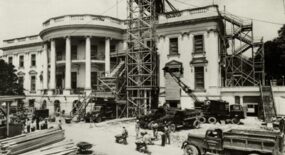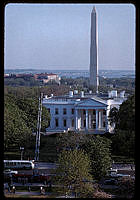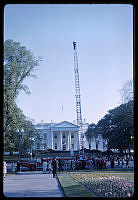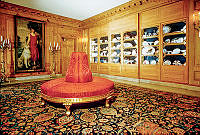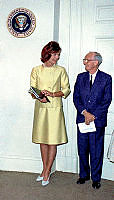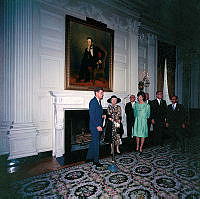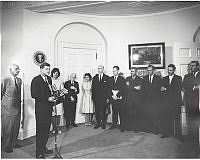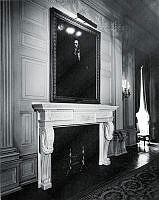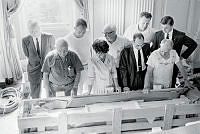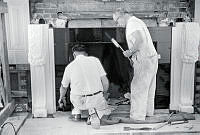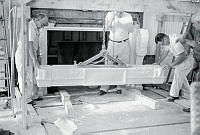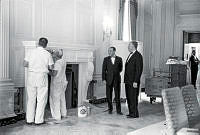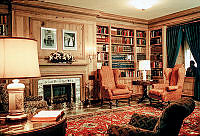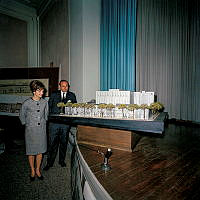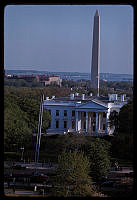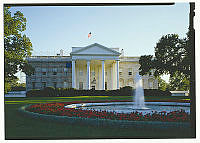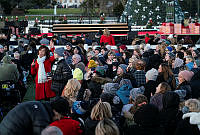Days of Destruction: The United States Capitol
Copyright © White House Historical Association. All rights reserved under international copyright conventions. No part of this article may be reproduced or utilized in any form or by any means, electronic or mechanical, including photocopying, recording, or by any information storage and retrieval system, without permission in writing from the publisher. Requests for reprint permissions should be addressed to books@whha.org
By nightfall on August 24, 1814, British forces had arrived on Capitol Hill and broken through the doors of the 14-year-old Capitol, initially designed by Dr. William Thornton with major interior improvements by Benjamin Henry Latrobe. The Capitol in 1814 was still a work in progress, as only the Senate and House of Representative wings had been completed. A temporary covered wooden walkway connected the chambers, awaiting the construction of the central rotunda section of the building.
The House chamber, piled high with furniture, was set alight. Flames rapidly devoured chairs, desks, tables and silk curtains. Watching from the heights of Georgetown, John McElroy, in charge of accounts at Georgetown College, took note of the time: 9:06 p.m. At about 10:00 p.m. the chamber's plate-glass rooftop collapsed, and flames shriveled the yellow pine floors and seats of the public galleries.
The Library of Congress' shingle roof was set on fire and caved in, along with collapsing timbers and disintegrating walls. Almost 3,000 books were destroyed. British Rear Admiral Sir George Cockburn managed to retrieve President Madison's 79-page private copy of the U.S. government's 1810 receipts and expenditures and kept the green-leather gilt book as a memento. The Senate Chamber's carpeting and draperies were destroyed and its marble columns disintegrated. Although left a charred ruin, several areas of the building survived to keep the Capitol's devastation from being complete.
Gallery
-

Completed in 1811, the first Hall of the House, one of the most beautiful spaces in America, was put to the torch in 1814. Its domed vestibule (right) survived the fire. Section of the South Wing, ca. 1803-1804.
Library of Congress -

The scene at the Capitol in a drawing before the 1814 fire. A temporary wooden structure connected the House and Senate wings at that time.
Library of Congress -

Angry residents scribbled on the Capitol's walls, “The capital and the Union lost by cowardice” along with epithets critical of Secretary of War John Armstrong who refused to defend the capital in the face of British intentions to attack. The Capitol in Ruins, 1814-1815, by George Munger.
Library of Congress





